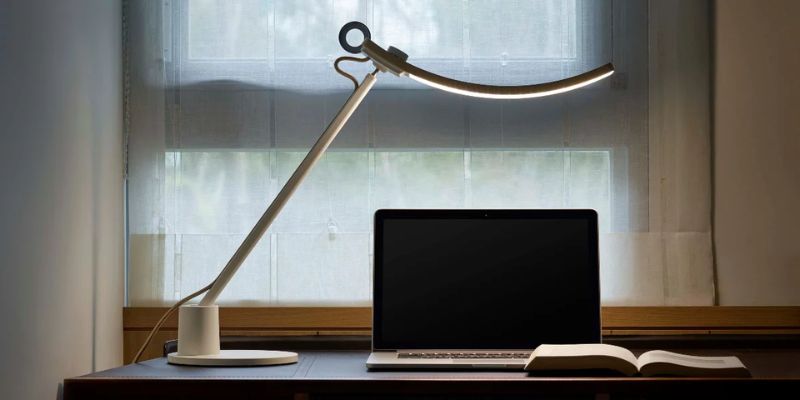LED desk lamps, which are both energy efficient and long lasting, have been increasingly popular in recent years. A concern remains, though: do LED desk lighting get hot? In order to answer the question of “Do Led Desk Lamps Produce Heat?”, we’ll go deeply into the technology behind them.
Do Led Desk Lamps Produce Heat?
What You Need to Know About LEDs
It’s important to understand how LEDs work on a fundamental level before getting into the heat-generating capabilities of LED desk lamps. A “Light Emitting Diode,” or LED, is a semiconductor device that uses electricity to produce visible light. LEDs don’t have to heat a filament like typical incandescent bulbs do in order to emit light. Electroluminescence, the direct conversion of electrical energy into light, is instead used.
LEDs and Their Impact on Temperature
Because they produce so much less heat than traditional lighting alternatives, LEDs have earned a reputation for being exceptionally energy-efficient. LED desk lamps, like any light source, generate some heat when turned on, but much less than traditional bulbs. This is because LEDs are constructed in such a way that they generate very little heat.
To function, LEDs require an electric current to be passed through a semiconductor. There is some loss of electrical energy in the form of heat throughout this procedure. While some heat is generated, the vast majority of the energy is converted into visible light. Therefore, LED desk lamps are safer and more comfortable to use for long periods of time since they remain cool to the touch.
Dissipation of Heat: Why Heat Sinks Are Necessary
LED desk lamps use a variety of heat dissipation techniques to maintain performance and lifespan. The LED chips generate heat, and the heat sink’s job is to dissipate that heat into the environment. Materials having high thermal conductivity, such aluminum or copper, are commonly used for heat sinks because of their ability to efficiently conduct and disperse heat.
Active cooling solutions like fans or heat pipes are also common in contemporary LED desk lamps alongside passive cooling methods like natural convection. With these additions, the potential for LED lights to overheat is reduced even further.
Clarifying Some Common Misconceptions
LED desk lamps produce very little heat, however this fact is still widely misunderstood despite overwhelming scientific evidence to the contrary. So that you have the right knowledge, let’s clear up these misunderstandings:
LEDs generate a lot of heat: This misunderstanding arises because most people automatically connect heat with conventional lighting. LED desk lamps, as was previously noted, have effective heat dissipation mechanisms and stay cool to the touch. You won’t get burned if you pick up and use an LED lamp.
LEDs generate some heat; nevertheless, the amount of heat generated by LED desk lamps is negligible. Their mechanisms for dissipating heat do a good job of sending the heat away from the lamp, so it doesn’t raise the temperature of the room too much.
The Benefits of Generating Very Little Heat
LED desk lamps provide a number of advantages, not the least of which is their low heat output.
Saving Energy: LED desk lamps are far more efficient than their incandescent and halogen counterparts because they produce less heat while using less electricity. The result is less pollution and cheaper electricity bills.
Increased Durability: Heat is the single biggest cause of early failure in lighting. LED desk lamps have a longer lifespan than incandescent or fluorescent alternatives because of their superior heat dissipation mechanisms.
Inviting and secure: LED desk lamps promote user safety since they stay cool to the touch, even after prolonged usage. You won’t have to worry about getting burned or being uncomfortable due to the high temperature, so you can get some work or studying done.
Conclusion
While it’s true that LED desk lamps get warm during use, such heat is much less than that produced by more conventional light sources. LED desk lamps are cool to the touch and produce less heat because of their effective heat dissipation mechanisms and the nature of LEDs themselves. Energy savings, a longer lifespan, and better comfort and security are just some of the many advantages of switching to LED technology.

